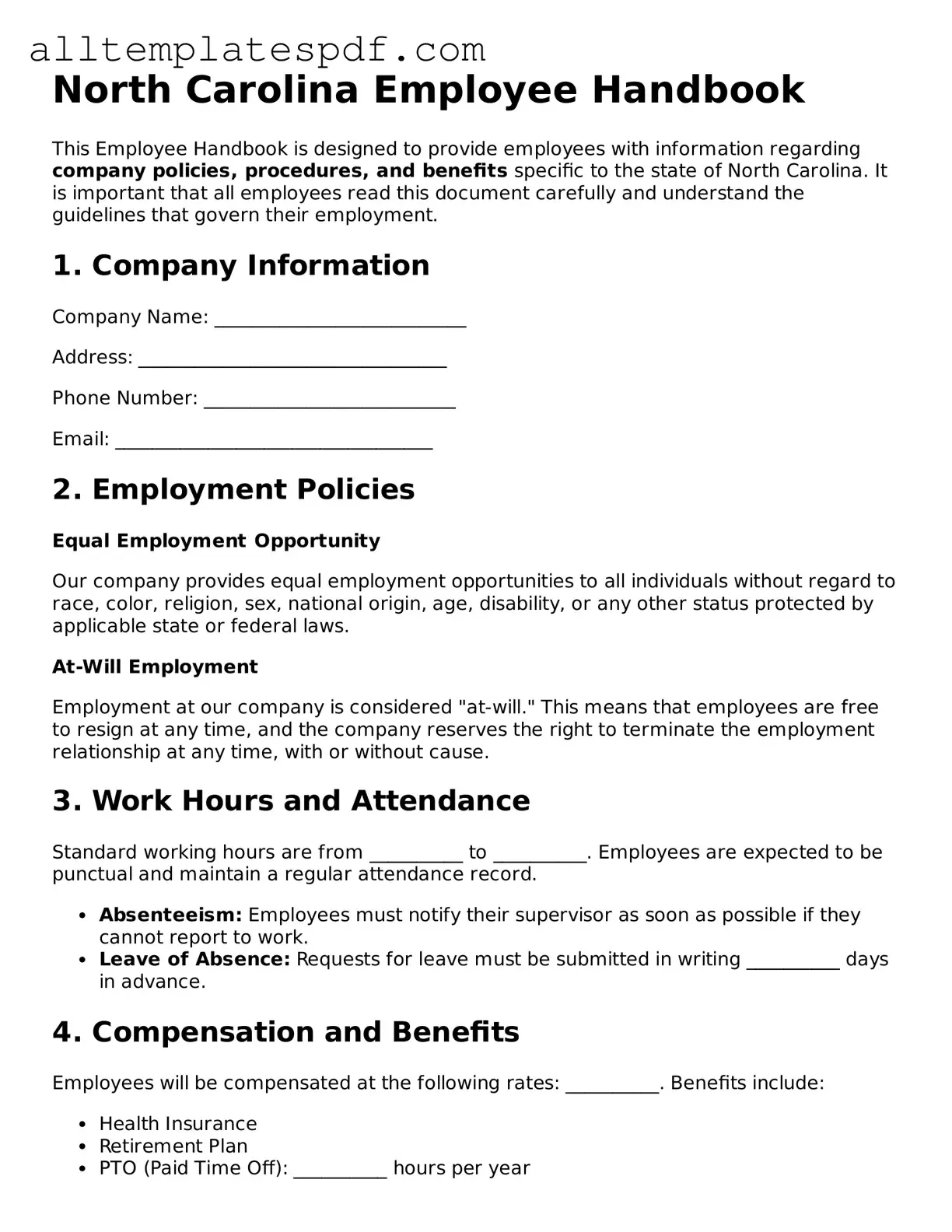Filling out the North Carolina Employee Handbook form can be straightforward, but many individuals make common mistakes that can lead to confusion or issues down the line. One prevalent error is overlooking the importance of reading the entire handbook before signing. This document contains essential information about company policies and employee rights. Failing to understand these details can result in miscommunication between employees and management.
Another frequent mistake is not updating personal information accurately. Employees often forget to include changes such as a new address or contact number. This oversight can hinder communication and may cause delays in important notifications or benefits.
Many people also neglect to ask questions when they are unsure about a policy. The handbook is designed to clarify company procedures, but if something is unclear, it’s crucial to seek clarification. Ignoring this step can lead to misunderstandings that may affect job performance or compliance with company policies.
Some individuals rush through the process and fail to review their entries for accuracy. Simple typos or incorrect information can create significant issues later. Taking a moment to double-check everything can save time and prevent unnecessary complications.
Another mistake is not keeping a copy of the signed handbook. Employees should always retain a copy for their records. This document serves as a reference point for understanding company policies and can be invaluable in case of disputes or questions in the future.
It’s also common for individuals to skip the acknowledgment section. This part confirms that the employee has received and understood the handbook. Not completing this section can lead to assumptions that the employee is unaware of the policies outlined in the document.
Some people overlook the importance of the signature date. Failing to date the acknowledgment can create ambiguity about when the employee received the handbook. This date is crucial for tracking compliance with policy updates and changes.
Employees may also forget to discuss the handbook with their supervisors or HR. Engaging in a conversation about the policies can clarify expectations and foster a better understanding of workplace culture.
Lastly, individuals sometimes assume that the handbook is a static document. Policies can change, and it’s vital to stay informed about any updates. Regularly reviewing the handbook ensures that employees remain compliant with current company standards.
